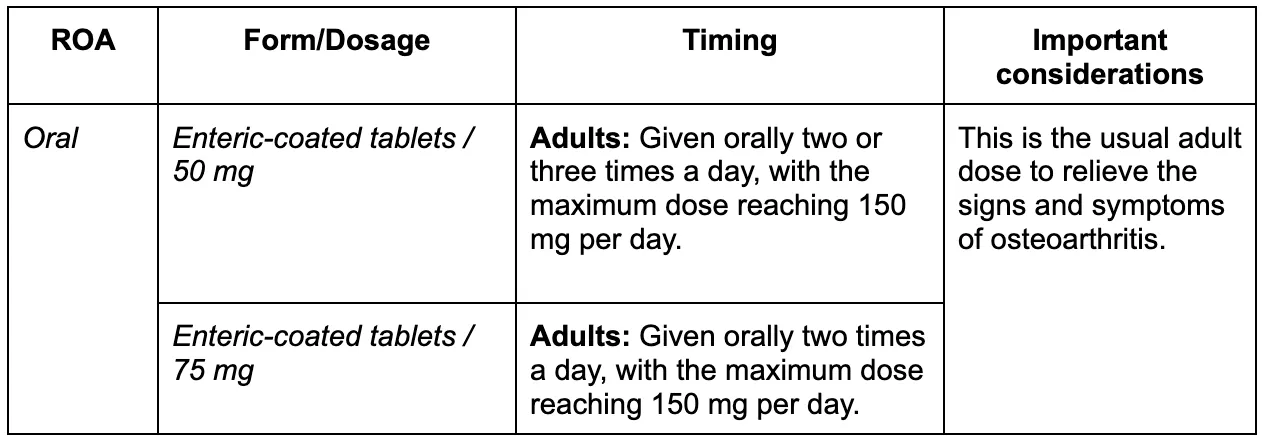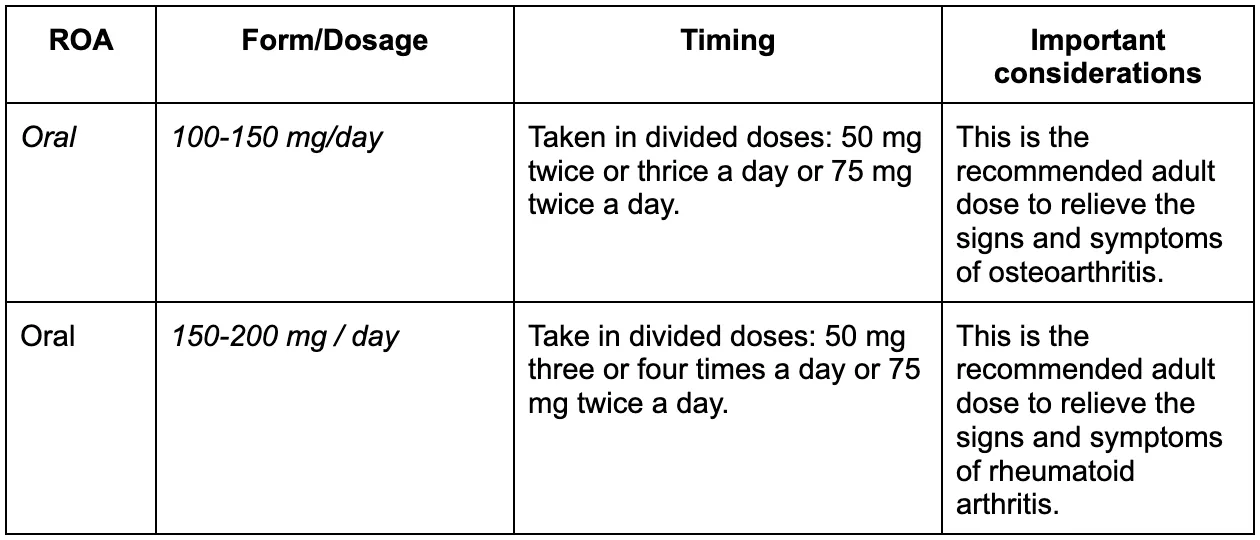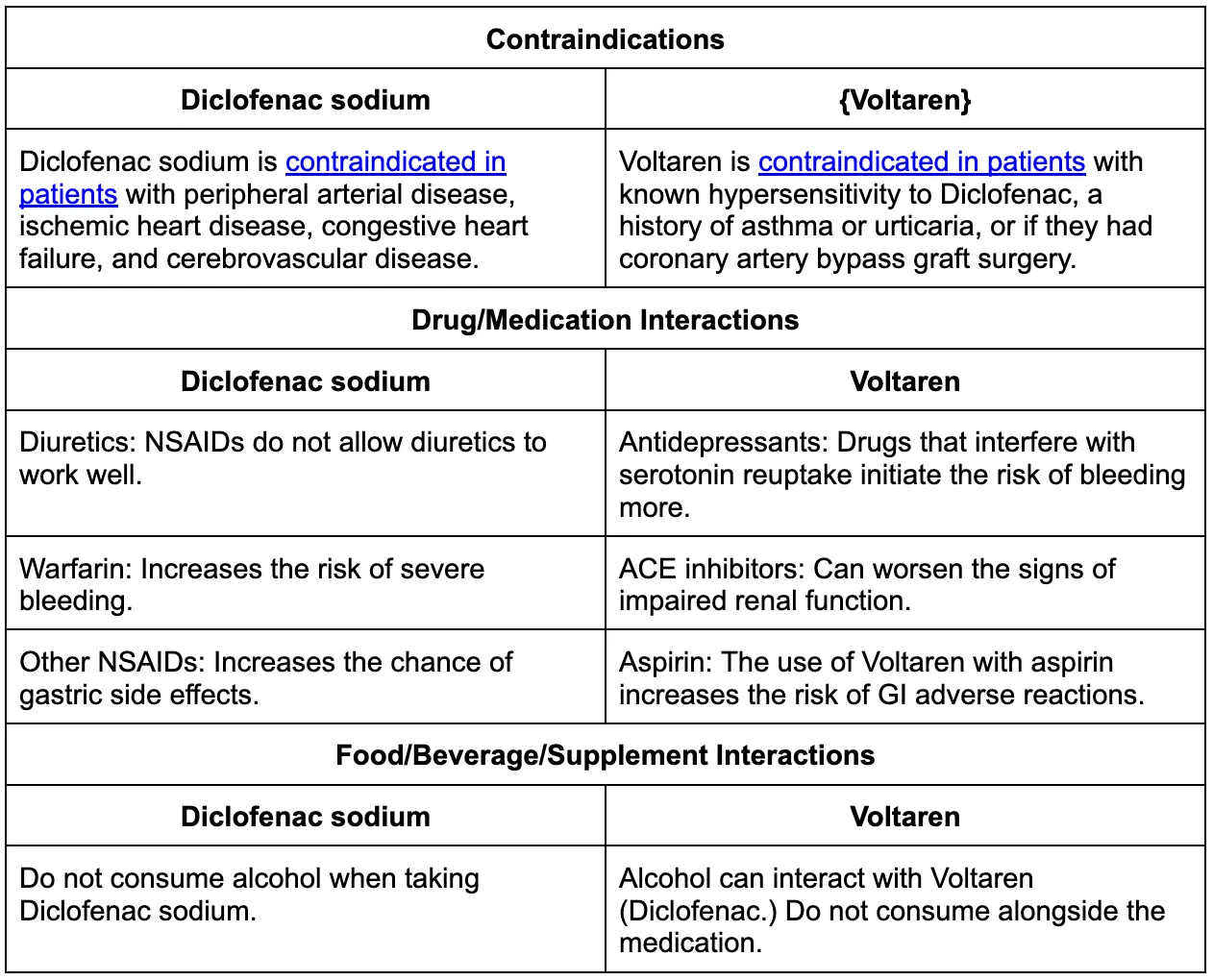Your session is about to expire
Diclofenac sodium vs Voltaren
Introduction
Diclofenac sodium is the sodium salt of Diclofenac, a non-steroidalanti-inflammatory drug that reduces pain, fever, and inflammation in the body. Diclofenac is available under the brand name Voltaren as tablets or topical gel. Diclofenac and Voltaren work in the same way by reducing those substances in the body that cause pain and inflammation – prostaglandins. By inhibiting the cyclooxygenase enzymes, it halts the synthesis of prostaglandins and reduces their elevated levels in synovial fluid and membrane of joints affected by rheumatic diseases.
About Diclofenac sodium and Voltaren
What is Diclofenac sodium?
Diclofenac is a commonly prescribed non-steroidalanti-inflammatory drug that reduces pain and inflammation-causing substances in the body. It has anti-inflammatory, analgesic, and antipyretic properties, known to treat a variety of inflammatory conditions, acute pain, and chronic pain.
The Diclofenac sodium topical gel was approved by FDA for nonprescription or over-the-counter use through a process called Rx-to-OTC switch in 2020. This use was indicated for the temporary relief of arthritis pain.
The sodium salt of Diclofenac is called Diclofenac sodium. It blocks the conversion of arachidonic acid to prostaglandin precursors, which are involved in pain, fever, and inflammation. Diclofenac sodium is primarily used for the treatment of rheumatoid arthritis and osteoarthritis signs and symptoms.
What conditions is Diclofenac sodium approved to treat?
Diclofenac sodium is approved to treat mild and moderate pain in the body, including the following conditions:
- Rheumatoid arthritis
- Osteoarthritis
- Sprains in muscles
- Back pain
- Gout.
How does Diclofenac sodium work for rheumatic diseases?
Diclofenac asserts its effects by inhibiting the synthesis of compounds in the body that are responsible for causing pain, inflammation, and fever. Prostaglandins are hormone-like substances in the body which are present in elevated levels in the synovial fluid and membrane of rheumatoid arthritis patients. Prostaglandin precursors are produced by the enzymes cyclooxygenase (COX)-1 and-2. Diclofenac inhibits these enzymes so that they cannot produce prostaglandins. This is why diclofenac is used as a first-line therapy for the relief of acute and chronic pain and inflammation resulting from rheumatic diseases.
What is Voltaren?
Voltaren is the brand name for the non-steroidalanti-inflammatory drug, Diclofenac. Voltaren is available in oral, topical, and ophthalmic dosage forms. The oral tablets are used to treat pain and inflammation caused by osteoarthritis and rheumatoid arthritis and to treat ankylosing spondylitis. Voltaren gel treats osteoarthritis of the hands and knees.
Voltaren is considered the gold standard for treating joint pain and swelling due to its efficacy, a wide range of dosage forms, acceptable cost-benefit ratio, and long treatment experience. Voltaren (Diclofenac sodium) was first approved by FDA in 1988. The enteric-coated tablets are indicated for the relief of signs and symptoms associated with rheumatoid arthritis, osteoarthritis, and ankylosing spondylitis.
What conditions is Voltaren approved to treat?
FDA has approved the use of enteric-coated tablets of Voltaren (Diclofenac sodium) for the following conditions;
- To relieve signs and symptoms of rheumatic disease pain, osteoarthritis, and rheumatoid arthritis.
- For acute or long-term use to relieve the signs and symptoms of ankylosing spondylitis.
How does Voltaren work for rheumatic diseases?
Voltaren works similarly to other NSAIDs by inhibiting the enzymes COX-1 and COX-2. Diclofenac has anti-inflammatory, analgesic, and antipyretic properties, and this effect is achieved by inhibiting the synthesis of prostaglandins – hormone-like compounds that are responsible for the generation of inflammatory response.
Since prostaglandins are the mediators of inflammation, the decrease of prostaglandins in peripheral tissues by the action of Diclofenac can treat acute and chronic pain and inflammation caused by rheumatic diseases.
Effectiveness
How effective are Diclofenac sodium and Voltaren for treating rheumatic diseases?
A number of data studies and analyses have proven that Diclofenac is highly effective in treating pain and physical disabilities associated with rheumatic diseases. The therapeutic dose and efficiency of the oral dosage forms are determined by the type of drug formulation and the selection of excipients. Modified-release tablets of Diclofenac are developed to achieve the optimum biological availability of the drug, thus improving its stability and reducing adverse effects.
In a number of clinical trials, it has been shown that Diclofenac is as effective as aspirin, ibuprofen, naproxen, and ketoprofen for reducing pain and improving function in rheumatoid arthritis patients.
Diclofenac is also equivalent in efficiency to ibuprofen, sulindac, indomethacin, and naproxen for treating osteoarthritis. The gastrointestinal adverse effects associated with Diclofenac are less serious than those caused by aspirin or indomethacin.
The active drug in Voltaren is 100% absorbed when taken via the oral route of administration. However, the first-pass metabolism allows only 50% of the absorbed dose to become systematically available. FDA has issued a warning about the use of Voltaren enteric-coated tablets, as the non-steroidal anti-inflammatory drugs can cause a serious cardiovascular event. This is why doctors usually prescribe the Voltaren gel instead of the tablets, as it comes with lesser side effects than the oral form. According to this double-blind, randomized controlled trial, a topical solution of Diclofenac was represented as a better alternative to oral therapy with a favorable safety profile.
There are several active clinical trials to examine the effect of Voltaren on the relief of pain and inflammation. You can discover these clinical trials according to a specific condition by visiting Power.
Dosage information
How is Diclofenac sodium administered for rheumatic diseases?
Published clinical data suggest that a dose of 75 to 150 mg of Diclofenac sodium every day is as efficient against rheumatoid arthritis as ordinary aspirin or indomethacin. Diclofenac sodium is available as 25 mg or 50 mg gastro-resistant tablets. Take this medication by mouth with a full glass of water, as prescribed by your doctor.
Diclofenac sodium dosage information

How is Voltaren administered for rheumatic diseases?
You must take Voltaren as prescribed by your doctor. Read the prescription label and medication guides before taking this medication. Your doctor may use the lowest effective dose in treating your condition. Swallow the whole enteric-coated tablet and do not crush, break, or chew it.
Voltaren dosage information

Side Effects
What are the most-common side effects of Diclofenac sodium?
Common side effects of Diclofenac sodium are;
- Indigestion
- Diarrhea
- Stomach pain
- Itching
- Increased blood pressure
- Swelling in arms or legs.
Are there any potential serious side effects of Diclofenac sodium?
Diclofenac can produce some serious side effects. If you experience any of these serious side effects, call your doctor immediately.
- Heart problems
- Shortness of breath
- Rapid weight gain
- Painful or no urination
- Feeling tired
- Dark urine
- Jaundice
- Tarry stools
- Coughing up blood.
What are the most-common side effects of Voltaren?
The most common side effects of Voltaren are;
- Increased blood pressure
- Indigestion
- Stomach pain
- Headache
- Dizziness
- Itching
- Swelling in arms and legs.
Are there any potential serious side effects of {Voltaren}?
When taking Voltaren by oral route, it can cause severe reactions. If you experience any of these side effects, seek medical help immediately and stop taking Voltaren immediately.
- Slurred speech
- Numbness or weakness in a part of the body
- Shortness of breath
- Chest pain spreading to the shoulders and jaw.
Contraindications and interactions
Warnings and general precautions for Diclofenac sodium and Voltaren
Diclofenac sodium is the generic term of the compound available under the brand name “Voltaren.” NSAIDs can cause you to bruise or bleed easily, and it is proven by studies that the combined use of antidepressants that interfere with serotonin reuptake with NSAIDs can increase the risk of bleeding more than using NSAIDs alone.
Contraindications and important interactions for Diclofenac sodium and Voltaren

Cost Comparison
How much do Diclofenac sodium and Voltaren cost?
The oral delayed-release tablet of Diclofenac sodium 75 mg costs around $14 for 10 tablets. So if you are taking two 74 mg tablets daily for the relief of osteoarthritis symptoms, it will cost you around $2.8 per day.
The Voltaren arthritis pain gel can cost you $66.38 dollars for a 100 grams tube. A single tube can last up to 6 months once you open and use it.
The popularity of Diclofenac sodium and Voltaren
Diclofenac sodium is a safe and effective painkiller sold under several brand names. The sodium salt of Diclofenac is a popular therapeutic agent that is available in various pharmaceutical forms. Diclofenac sodium is not as popular in the USA as in other countries, as it raises the risks of heart attacks in patients with cardiovascular diseases.
As for the Voltaren product range, it provides effective body pain relief in patients with rheumatic diseases. Voltaren is more effective than other NSAIDs for the treatment of pain and inflammation, but it also causes side effects. This is why doctors preferably recommend the use of Voltaren topical gel, as it results in fewer systemic side effects.
Conclusion
Takeaway
Diclofenac sodium and Voltaren are essentially the same things, with diclofenac being the sodium salt of the NSAID, sold under the brand name Voltaren. Diclofenac or Voltaren works by blocking the cyclooxygenases, which results in lesser production of prostaglandins – compounds that initiate pain and inflammatory responses in the body.
Voltaren is available as an OTC medication at many pharmacies in the dosage forms of oral and topical gel or suppositories. However, we recommend always following your doctor’s prescription so that you do not use the medication in greater doses or for a longer duration than necessary.